820 Squadron 1964/1965 HMS Eagle
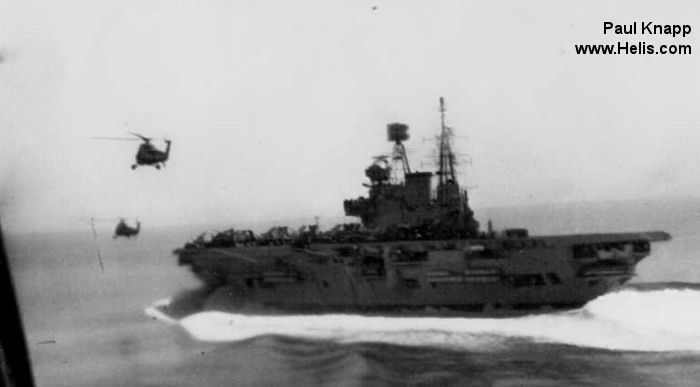
In December 1964, Royal Navy 820 Squadron deployed from RNAS Culdrose to aircraft carrier HMS Eagle (R05) for a 6 month Far East deployment, returning 24 May 1965. The following Westland Wessex were emkarked:
After returning they departed again on August 1965 to the Far East, this time for a 13 month Far deployment, returning September 1966.
When we formed in 1964 our original numbers were 290 etc., but when we did the first leg on HMS Eagle it was found that our side numbers were the same as a Buccaneer Squadron so we had to change them to 060 etc. to avoid confusion. Notice old 93 and new 67 in company with HM Submarine Otter, below
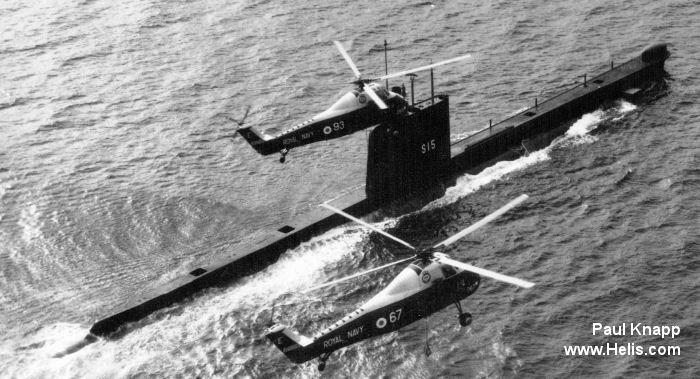
Side codes 90 to 95
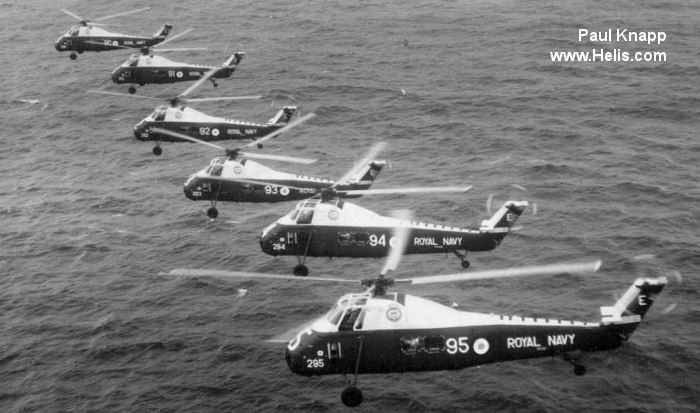
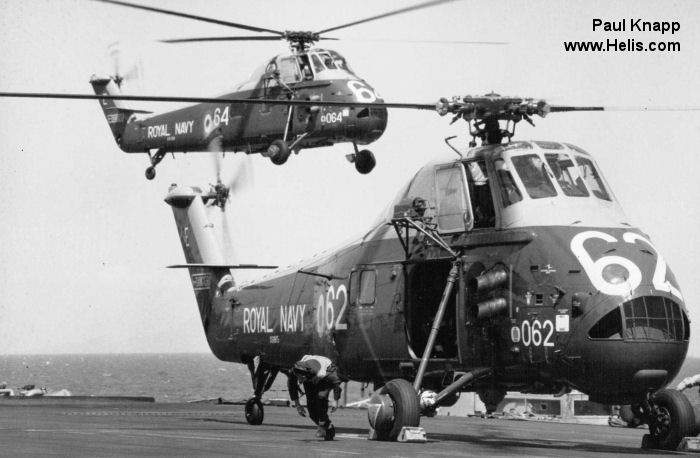
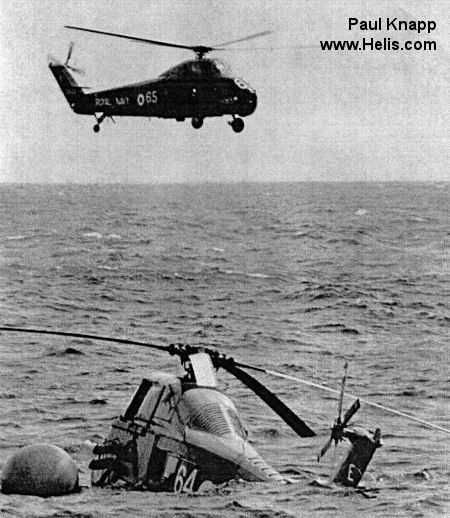
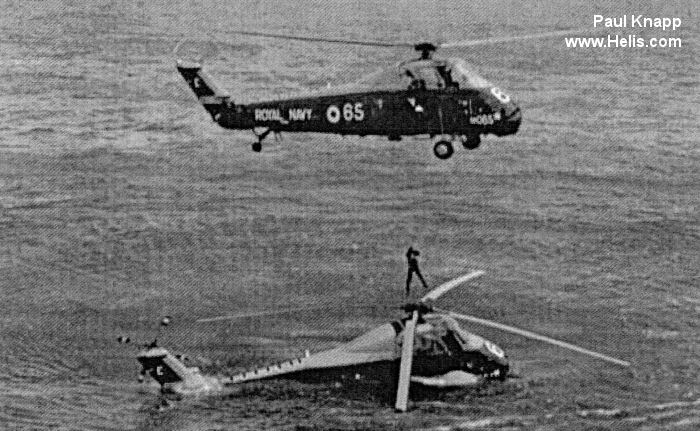
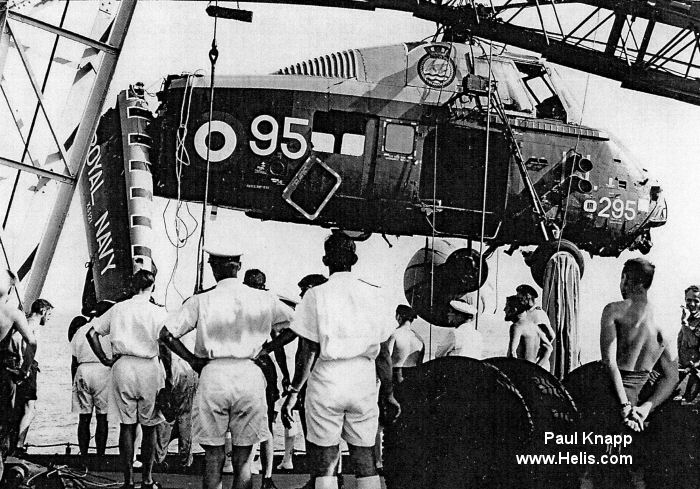
I was the sonar aircrewman in XS119, during a night departure screen from Subic Bay in the Philippines, during Exercise FOTAC 2.The aircraft experienced a "runaway" governor. Instead of the rotor head doing 220 revs per minute it ended up doing about 3 times as much! To land on normally would have "pulled too much power"; so we made our approach to the deck of HMS Eagle from directly astern at about 5ft above the sea surface,and then used the "surge of power" to lift us 50ft to flight deck level, where we did a "running land o"! The excessive use of the brakes, to enable us to stop, caused a "wheel fire", but it was extinguished immediately. we "came to rest! The flight deck at the time was "topped up" with fixed wing aircraft, "running up" prior to launch!. The crew of XS119, consisted of Lt Smith(1st Pilot), Lt Ward(2nd Pilot),Lt Suggit(Observer) and myself Able Seaman UC2(Aircrew) Andy Knapp.
On 24 March 1965 XS123 was in the SAR mode and was the duty planeguard.There had had been a lot of fixed wing activity and XS123 had landed on and shut down between each launch and recovery. It was assumed that the FMU(Fuel Metering Unit) which was "unexpandable" had expanded and reduced the fuel flow. Continuous start ups and the high air temperature was thought to be the cause of problem. It resulted in the aircraft ditching, sadly S/LT "Cassius" Clay(Pilot) and LAM(Aircrew Diver)"Geordie" Little, lost their lives on impact. LAM "Jock" Renshaw managed to get clear; although he ingested a lot of aviation fuel in the process. The port oleo air bag punctured and the one in the tail unit sustained damage as well. The aircraft remained suspended just below the surface for long enough to recover the bodies of Sub/Lt Clay and LAM Little, and then the air bag on the starboard oleo burst and the aircraft sank.
25th March 1965 XS121 gone to SAR role, replacing XS123 which had ditched the day before. The aircraft had operated in almost the same set of circumstances as XS123, which led to the belief that the problem was with the FMU's fitted to Wessex Mk1's. After signals had been exchanged with Fleetlands back in the UK it was decided "to ground" all Wessex Mk1's until the problem could be explored further. 820 Sqdn. was "cleared" for one flight only, to enable us to disembark to RNAS Sembewang in Singapore. Once ashore, the FMU's were removed and returned to Fleetlands, and replacements were sent to us. This took some time. We remained "grounded" until 20th April 1965. XS121 was recovered by HMS Eagle(see photo). The starboard oleo air bag burst when it was forced onto the jet pipes on impact. The port one remained intact. The rear flotation bag was punctured when the tail unit "sagged" during recovery. The crew consisted of Lt Dines(Pilot), L/Sea(Aircrew)"Soapy" Watson and L/Sea "Charlie" Grace, all of whom made a safe escape, although they did sustain some "bumps and bruises"!
